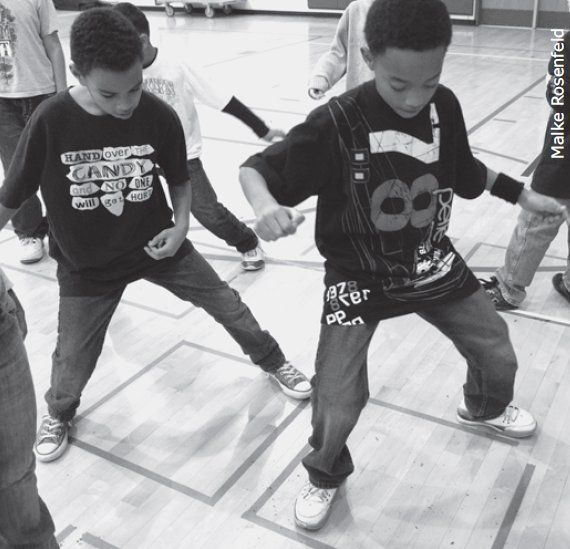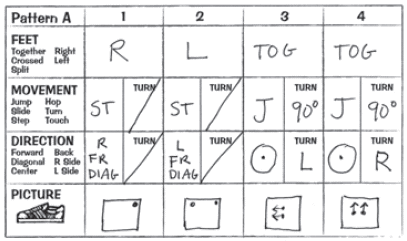Math in your feet
By Murray Bourne, 18 Apr 2011
Howard Gardner proposed the notion of Multiple Intelligences in the 1980s. The idea is we have more going on in our heads than just text, math and logic (like we see in normal "IQ" tests).
Another important concept is that of learning styles, which suggests we see the world in different ways, and hence we prefer to learn in different way as well.
There is no doubt some people are more visually oriented, while others prefer to learn via text. Others are easily distracted (or helped) when music is on during a class, and then there are those (like me) who prefer to be walking in the jungle rather than sittng in a clasroom. Every classroom has some "fidgets" - those students who just hate to sit still for any length of time.
For most students, math is a thing done in a classroom while sitting at a desk. But it doesn't have to be this way.
Dance and the path to math
I came across an interesting article, Jump Patterns: Percussive Dance and the Path to Math [no longer available] by Malke Rosenfeld, who is:
...an independent teaching artist focusing on math/dance integration, kinesthetic learning methods, and harnessing children’s innate love of movement in the search for connection making and creative expression.
Having taught dance for some time, Rosenfeld came across elementary school master teacher and math specialist Jane Cooney. The partnership resulted in an interesting dance and math program called Math in Your Feet.
The key idea is there are many math concepts in dance and likewise, dance can help to understand some math concepts. Here's how Rosenfeld explains how dance helps students understand some of the concepts in the math standards as promoted by the National Council of Teachers of Mathematics:
Patterns (“anything with a unit—a shape, design, rhythm, or motif—that repeats in a predictable and organized manner”),
Problem Solving (“engaging in a task for which the solution or method is not known in advance”2),
Transformation (to change the shape or position of an object),
Combination (to find all the different ways something can be combined, such as toppings on a pizza or dance steps), and
Communication (to speak fluently about what is learned in both math and dance through written and spoken language, and to express ideas through kinesthetic, rhythmic, and symbolic language).
Each theme represents an idea found in both math and dance; each day in the residency we use the math to describe the dance and the dance to illustrate math concepts, to the mutual benefit of both subject areas.

Students enjoy working on a dance routine
Movement can be very important for learning. Math In Your Feet is an interesting way to develop some math concepts, while being creative and enjoying yourself.
Older students would also benefit from the use of movement in their math classes. Whenever there are procedures involved, movement can help us remember. Movement and associating things by place are some of the many techniques used by memory masters.
Another positive outcome of the Math in Your Feet approach is that students can pick up math vocabulary more naturally, as it is embedded into the activity.

Transcriptions of dance patterns, showing some of the math concepts involved
Math and Movement
The Math & Movement program is on a related theme - getting students to move, which helps brain function.
This video gives an idea what it's about:
Be the first to comment below.